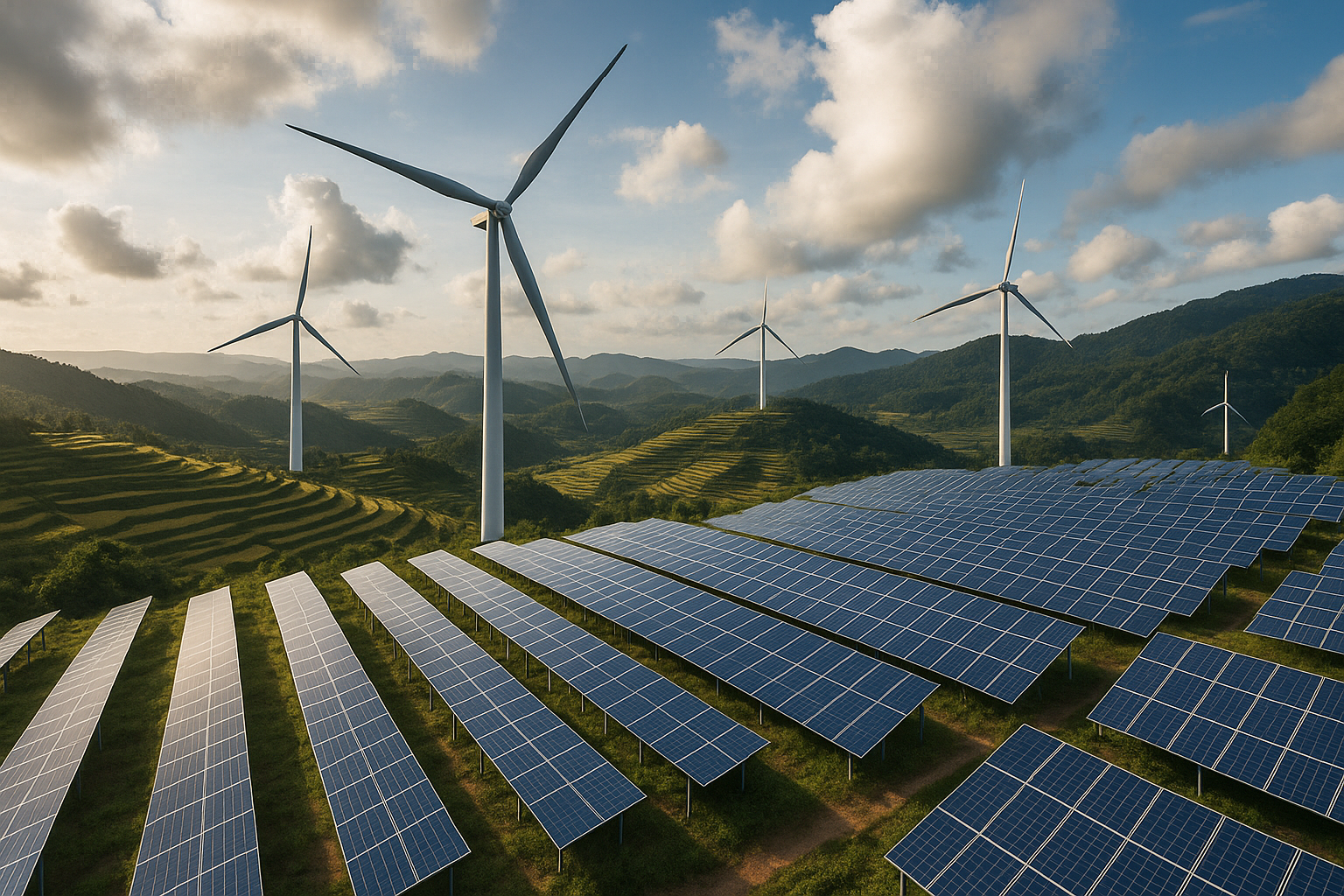World Bank Pushes Results-Based Climate Finance to Link Carbon Action with Growth
The World Bank and its allied facilities are advancing Results-Based Climate Finance (RBCF), a model that rewards developing countries only after verified emission reductions, ensuring accountability, inclusivity, and stronger climate action. By linking payments to results, RBCF delivers not just carbon savings but also co-benefits like clean energy access, sustainable farming, and job creation.

Results-Based Climate Finance (RBCF) has been brought into sharper focus by the World Bank’s Climate Finance Mobilization Unit, supported by allied research facilities including the Forest Carbon Partnership Facility, the BioCarbon Fund Initiative for Sustainable Forest Landscapes, the Carbon Initiative for Development, and the Transformative Carbon Asset Facility. These institutions have helped craft a financing model that moves away from traditional upfront grants and instead ties disbursement to the achievement of verified climate results. In practice, this means that governments or project developers in developing countries only receive funding once emission reductions have been achieved, measured, and independently certified. By shifting the emphasis from promises to delivery, RBCF strengthens accountability, reduces risks for financiers, and helps host countries build the technical and institutional capacity needed for long-term climate resilience.
How Carbon Crediting Works Under RBCF
At the core of the RBCF model lies carbon crediting, which rewards projects for each verified metric ton of greenhouse gas reduced or removed. Unlike standard commercial carbon markets, however, credits generated under RBCF do not need to be transferred abroad. Instead, they remain in the host country, allowing governments to count them toward their own Paris Agreement targets. This distinction helps preserve national sovereignty over climate action while still mobilizing international finance. The process itself follows a structured path: identifying projects that face viability gaps, developing them into crediting programs, signing Emission Reductions Payment Agreements, and putting in place rigorous measurement, reporting, and verification (MRV) systems. Only after the credits are certified do payments flow, typically from World Bank-managed trust funds to the project entities. Importantly, social inclusion is built into every stage, ensuring that Indigenous Peoples, local communities, and other marginalized groups benefit from the financial flows.
Real-World Impact in Africa and Beyond
The model’s success is already visible in several countries. In Ethiopia, a program co-developed by the World Bank and the Development Bank of Ethiopia has expanded access to off-grid renewable energy and clean cooking technologies. Between 2016 and 2024, it leveraged nearly $56 million from small and medium enterprises, directly benefiting around 3.2 million people by lowering the cost of clean household energy. In Ghana, the Forest Carbon Partnership Facility rewarded the country with $21.7 million for verified reductions totaling 4.4 million tons of emissions, generated through climate-smart cocoa farming. By avoiding the expansion of cocoa farms into forests, the initiative boosted yields and secured predictable incomes for more than 241,000 farmers. These cases illustrate how RBCF not only reduces emissions but also delivers tangible socio-economic benefits such as jobs, higher productivity, and market resilience.
Overcoming Challenges While Building Trust
Despite its promise, RBCF is not without obstacles. Quantifying emission reductions requires establishing credible baselines and proving additionality, the idea that the project would not have happened without carbon finance. This is technically demanding and often requires significant upfront capacity building. MRV systems themselves need strong institutions, which many developing countries lack. Perhaps the greatest risk is that if a project fails to generate credits, no payments are made. Yet the World Bank argues that RBCF offers more reliability than commercial carbon markets. Payment commitments from sovereign-backed funds are more secure, and certain safeguards compensate developers if rule changes affect credit volumes. Unlike market-based mechanisms, RBCF also avoids the transfer of emission reduction titles, meaning host countries retain full ownership of their mitigation outcomes. This combination of reliability, flexibility, and retained sovereignty has helped build trust among developing nations that might otherwise hesitate to enter global carbon markets.
Scaling Up for Global Transformation
The World Bank has identified three priority areas where RBCF is proving transformative: Natural Climate Solutions, Sustainable Infrastructure, and Fiscal and Financial Solutions. In Zambia, the BioCarbon Fund has supported climate-smart agriculture and forest conservation, raising crop yields by over 30 percent while generating new rural jobs. In Rwanda, solar home systems and clean cookstoves distributed under the Carbon Initiative for Development have started issuing high-quality carbon credits, with payments already disbursed in 2025. In Uzbekistan, subsidy reforms and emissions cuts totaling half a million tons earned the country $7.5 million in RBCF-linked payments. Building on such successes, the Bank is now rolling out Scaling Climate Action by Lowering Emissions (SCALE), a global initiative designed to consolidate lessons and provide countries with a pathway to access climate finance at scale. A complementary trust fund, Enhancing Access to Benefits while Lowering Emissions, ensures that disadvantaged groups remain central to the process. Together, these initiatives underscore RBCF’s role as a bridge between traditional concessional finance and evolving carbon market structures.
In all, Results-Based Climate Finance is emerging as one of the most innovative tools in the climate finance landscape. It pays not only for verified emission reductions but also for development dividends such as job creation, energy access, and social inclusion. With robust safeguards, international backing, and a growing portfolio of successful case studies, RBCF is steadily building a foundation of trust. For developing countries, it offers a way to monetize climate action while retaining ownership of their national climate goals. For the international community, it provides a credible pathway to scale up finance and deliver on the Paris Agreement. And for millions of people already benefiting from clean energy, sustainable agriculture, and forest protection, it represents proof that climate finance can be both fair and transformative.
- FIRST PUBLISHED IN:
- Devdiscourse
ALSO READ
World Bank Report Charts $10 Trillion Pathway to Decarbonize East Asia’s Energy
Decline in Mangrove Carbon Stocks Threatens Climate Goals, Says World Bank Report
World Bank–Egypt Partnership Framework Targets Inclusive Growth and Reform
World Bank Approves $47.9M Education Grant to Boost Schooling in Punjab










